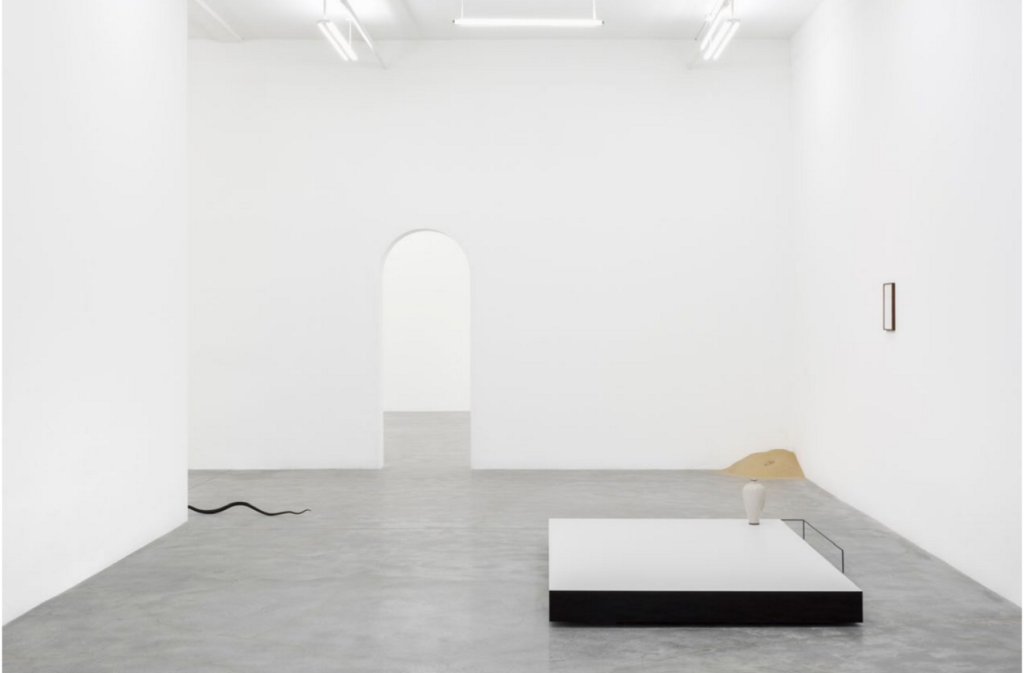
Haris Epaminonda, installation view “Untitled #1 a/v,” (2016) in the foreground, “Untitled #2 a/v,” (2016) in the background. Image courtesy of Casey Kaplan, 2016
Upon entering Haris Epaminonda’s first solo show at Casey Kaplan in New York, viewers are initially greeted with two minimal installations. In the foreground Untitled #1 a/v (2016), consisting of a vase on top of a wooden platform and thin metal rod, a framed page of a book hung on the wall, and a partially hidden iron snake on the floor. In the background, Untitled #2, a/v (2016) includes a rounded doorway in a fabricated wall and a pile of sand concealing the majority of a stone carved Gandhara head. Aesthetically, the flawless installation reminds one of a still-life a painter would set up for a study; the lacquered wooden platform to place the objects, the glazed Chinese vase and iron snake that look as if they belong in a museum, a reflective metal structure, and a piece of paper. By meticulously choosing and designating each item to a specific setting, all while carefully analyzing its context, Epaminonda is able to create a dissonance in her harmonic installation. For example in Untitled 1 a/v, the Chinese vase juxtaposed with a framed text containing a brief summary of a Korean intellectual and landscape painter Ra Ong from the Lee Dynasty and his accomplishments challenge the viewer’s knowledge and generalization of different cultures with just the specificity of the object she chooses to display.
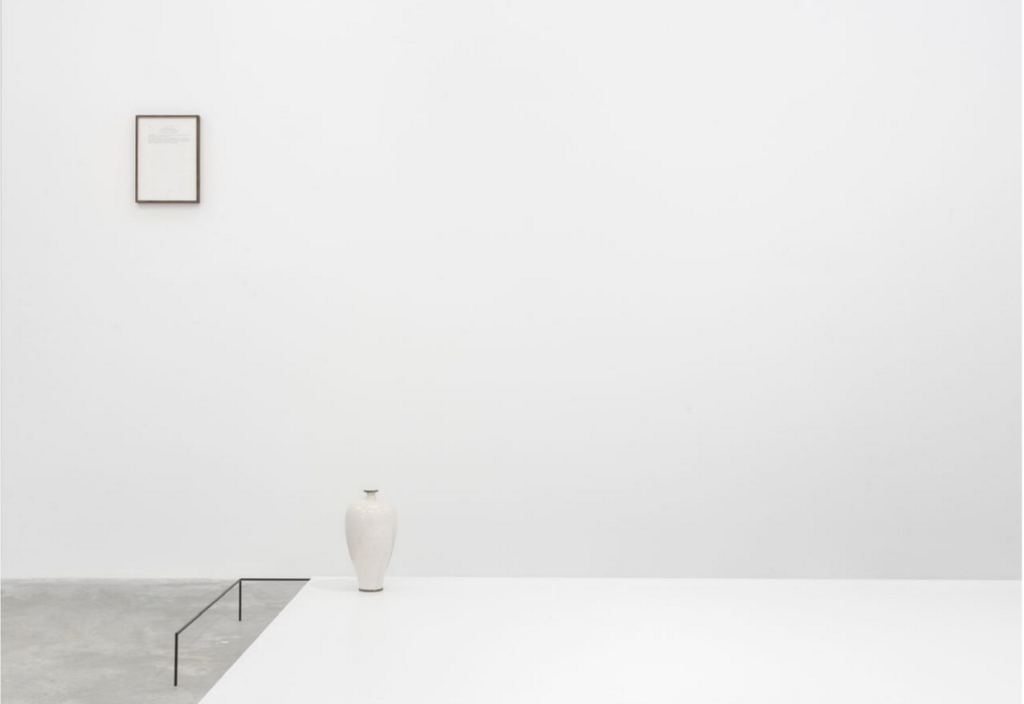
Haris Epaminonda, Detail view of “Untitled #1 a/v,” (2016) Image courtesy of Casey Kaplan, 2016
The way Epaminonda selects and arranges these elements and the information she offers can be equated to a painter’s brushstroke. Here’s how: when a master painter works on a still-life, their choice of subject matter and stylistic rendering of said subjects dictates how the audience is to view and ponder the work. Epaminonda’s subject matter is both the artifact she chooses and its inescapable history, now altered by how the objects are physically manifested. The dissonance created by the installations can be viewed as an intentional “conceptual brushtroke.” And just how a master painter would juxtapose and render their subjects so that the viewers ponder over the subjects and their relationship, she provides just enough information and context for each visitor to consider these objects in a way they would with a painting.
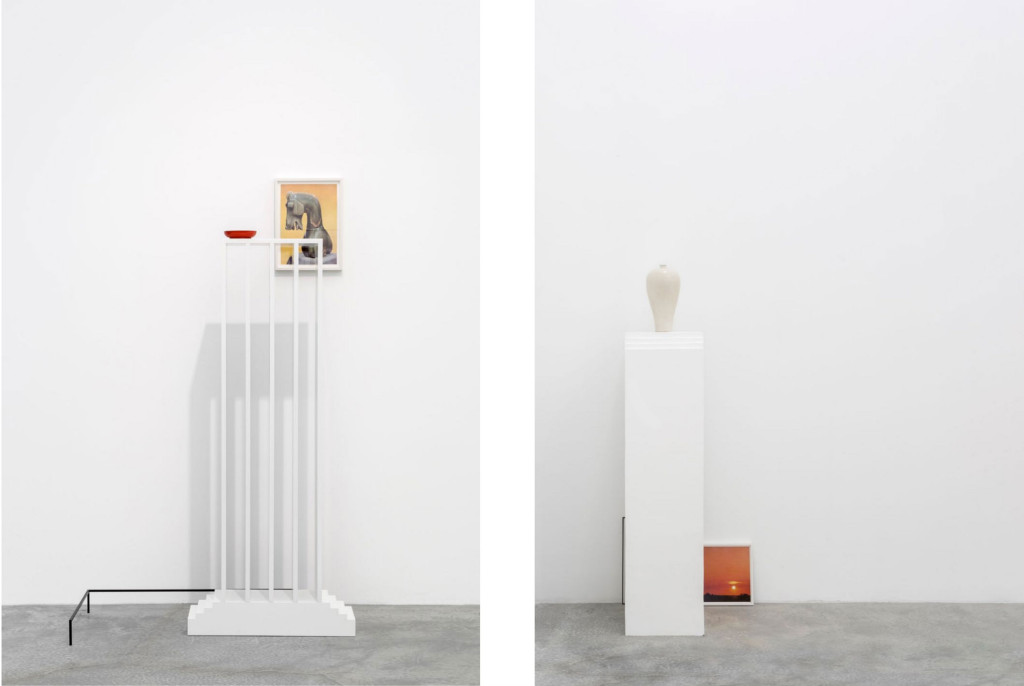
Haris Epaminonda, Installation view, “Untitled #3 a/v,” (2016) on the right, “Untitled #8 a/v,” (2016) on the left. Images courtesy of Casey Kaplan, 2016
Her conceptual concerns are not limited to cultural exploration of these objects and found pages, but delve deeper to the crux of what notions constitute an image or an object, and the ways their representation could be manipulated through various juxtapositions. The depth of this exploration is exemplified by the dividing wall with a carved out entrance in Untitled #2 a/v, (2016). From the placement of the negative space in the wall, one can infer that it is an entrance or an exit but because of subtle formal changes where the top is rounded and the shape as a whole is a bit narrower than a traditional western doorway, the shape automatically creates a quiet, but profound rift in the space.
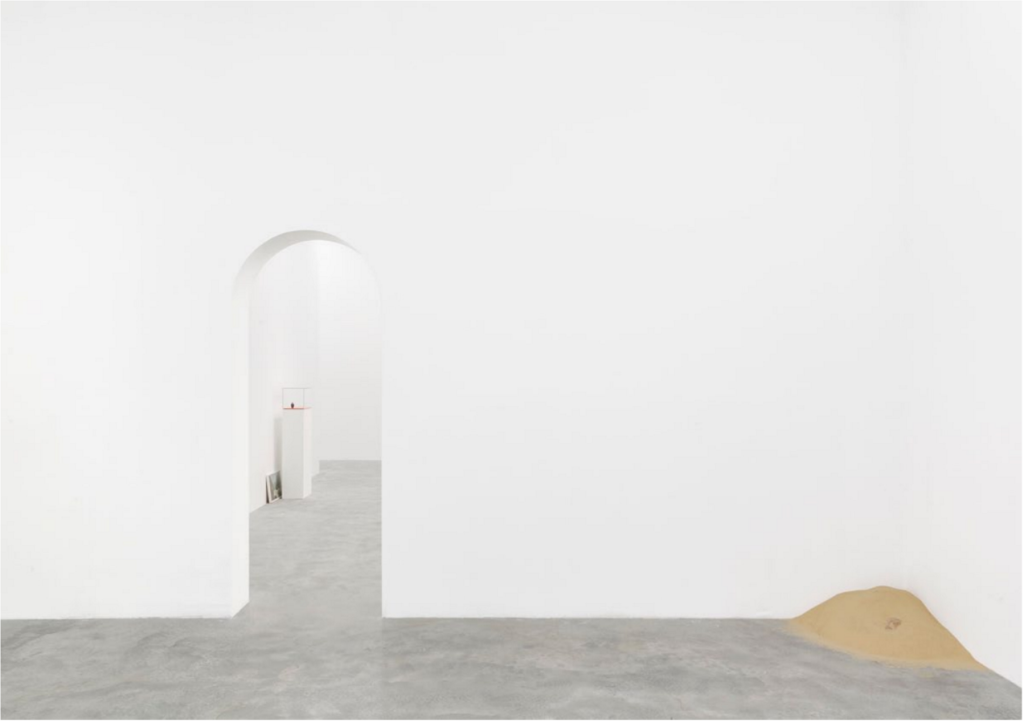
Haris Epaminonda, Installation view, “Untitled #2 a/v,” (2016) in foreground, “Untitled #7 a/v,” (2016) in the background. Image courtesy of Casey Kaplan, 2016
Each sculptural installation exists due to the artifacts placed in it, further expanding the dialogue through the repetition of cultural artifacts just as a repeated imagery in a body of paintings does. Moreover, each installation is aesthetically connected by both sculptural and formal elements. The use of pedestals and metal frames play a major compositional role, while also being functional. In Untitled #4 a/v, (2016), a polished metal structure acts as definitive lines in a painting that divide the surface into coherent spaces, and the pedestal is used in order to elevate the height of the lobster in order to engage with the dried Areka leaf and the Chinese glass vase placed on gold leaf. Her choices in of lacquers for the pedestals also helps balance the minimal aesthetic throughout the whole gallery.

Haris Epaminonda, Installation view, “Untitled #4 a/v,” 2016. Image courtesy of Casey Kaplan, 2016
The metal structures in this exhibit create a paradox by recognizing three-dimensional space while at the same time flattening the installations, in effect, rendering them two-dimensional. This is best demonstrated by Untitled #10 a/v, (2016) where one could imagine the structure surrounding a red Chinese vase and free-standing pink wall as a two-dimensional line. She uses these structures to physically draw in space, adding yet another painterly gesture to her vocabulary. Haris Epaminonda is confident in these gestures and she hints at it in the framed text at the very entrance of the gallery. Referring to Ra Ong, the final sentence reads: “The economy of line is noteworthy,” proving to be a self-fulfilling prophecy. Through her careful gestures of curating and placing an object, Haris Epaminonda provides viewers with what could be construed as a body of paintings that have been tangibly realized.
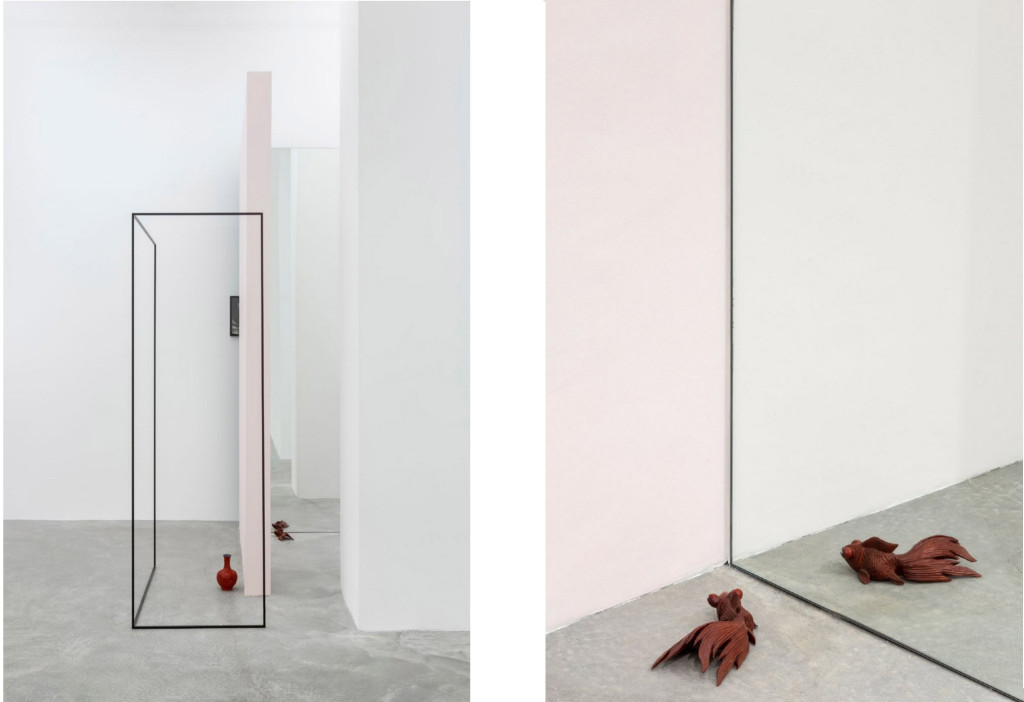
Haris Epaminonda, Installation view (right) and Detail view (left), “Untitled #10 a/v,” 2016. Images courtesy of Casey Kaplan, 2016
Haris Epaminonda, Vol. XVII is on view at Casey Kaplan, New York until April 23rd, 2016.
